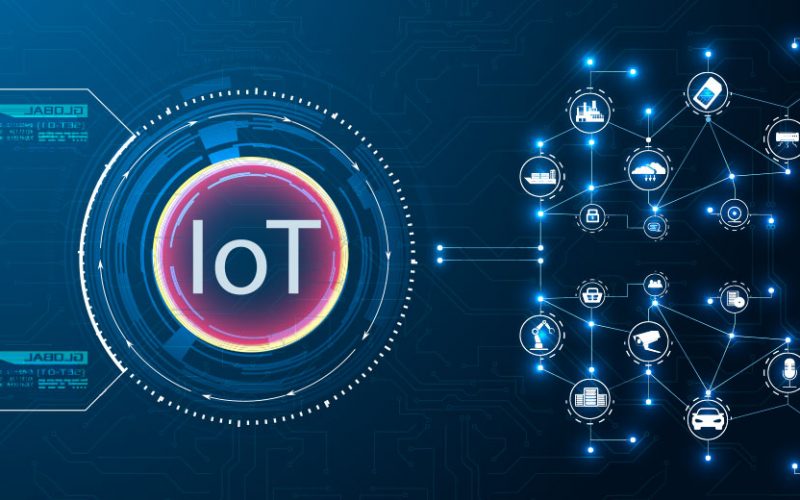Data encryption and integrity are essential aspects of IoT security and privacy. Encryption protects the confidentiality of data by encoding it in a way that only authorized parties can decrypt and access it. Data integrity ensures that data remains unaltered and trustworthy throughout its lifecycle. Here’s an overview of data encryption and integrity considerations in IoT:
- Encryption Algorithms: Select strong encryption algorithms that are suitable for resource-constrained IoT devices. Commonly used algorithms include Advanced Encryption Standard (AES) for symmetric encryption and RSA or Elliptic Curve Cryptography (ECC) for asymmetric encryption. Ensure that encryption algorithms and key lengths meet industry best practices and compliance requirements.
- Secure Data Transmission: Encrypt data during transmission to protect it from unauthorized access or tampering. Transport Layer Security (TLS) or Datagram Transport Layer Security (DTLS) protocols are commonly used for securing data communication in IoT systems. These protocols provide encryption, authentication, and integrity checks to ensure secure end-to-end communication between devices and the cloud.
- Secure Storage: Encrypt data at rest to protect it when stored on IoT devices or in cloud storage. Use strong encryption mechanisms to safeguard sensitive data, including sensor readings, user credentials, or personal information. Encryption keys should be properly managed and securely stored to prevent unauthorized access to encrypted data.
- Key Management: Implement secure key management practices to protect encryption keys. Generate and store keys securely, avoiding hardcoding or transmitting them insecurely. Key rotation and revocation mechanisms should be in place to periodically update keys and revoke compromised or compromised keys.
- Message Integrity and Authentication: Ensure the integrity and authenticity of IoT data by implementing message authentication codes (MAC) or digital signatures. These mechanisms verify that data has not been tampered with during transmission and that it originates from a trusted source. HMAC (Hash-based MAC) or digital signature algorithms like RSA or ECC can be used for data integrity and authentication.
- Secure Firmware Updates: Protect the integrity of firmware updates by implementing secure firmware update mechanisms. Use digital signatures or code signing to verify the authenticity and integrity of firmware updates before installation on IoT devices. This prevents the installation of malicious or tampered firmware, which could compromise the security of the device.
- Secure Data Processing: Implement secure data processing practices to ensure data integrity. Apply checks and validations to incoming data to identify anomalies or potential attacks. Implement secure coding practices and input validation techniques to prevent common vulnerabilities such as buffer overflow or injection attacks.
- Secure Cloud Storage and Processing: If IoT data is stored or processed in the cloud, ensure that proper security measures are in place. Employ encryption for data at rest and in transit, implement access controls to limit data access to authorized parties, and consider the physical and logical security measures provided by the cloud service provider.
- Privacy-Preserving Techniques: Consider privacy-preserving techniques such as data anonymization, pseudonymization, or differential privacy when handling sensitive or personal data. These techniques help protect individual privacy while still enabling useful analysis and insights from the data.
- Compliance and Standards: Adhere to relevant security and privacy standards and regulations specific to your industry and region. Standards such as ISO/IEC 27001, NIST Cybersecurity Framework, or GDPR (General Data Protection Regulation) provide guidelines and best practices for securing data in IoT systems.
Data encryption and integrity are critical aspects of IoT security and privacy. With the proliferation of interconnected devices in the Internet of Things (IoT), ensuring the confidentiality and integrity of data is paramount. Here’s an overview of data encryption and integrity in the context of IoT:
- Data Encryption: Encryption is the process of encoding data to protect it from unauthorized access or interception. In an IoT environment, encryption is essential for securing data during storage, transit, and at rest. It involves converting plaintext data into ciphertext using cryptographic algorithms and requires the use of encryption keys.
- End-to-End Encryption: Implementing end-to-end encryption ensures that data is encrypted from the source device to the destination. This approach provides a strong level of protection and minimizes the risk of data breaches or interception.
- Secure Key Management: Robust key management is crucial for maintaining data confidentiality and ensuring that encryption keys are kept secure. Key management systems help generate, distribute, store, and revoke encryption keys appropriately.
- Data Integrity: Data integrity ensures that data remains accurate, complete, and unaltered throughout its lifecycle. Maintaining data integrity is essential for preventing unauthorized modifications, data corruption, or tampering.
- Hash Functions: Hash functions generate a fixed-size string (hash value) that represents the data being protected. By comparing the hash values before and after transmission or storage, integrity can be verified. Even minor changes in the data will result in a different hash value, making it possible to detect unauthorized modifications.
- Message Authentication Codes (MAC): MACs provide a means to verify the integrity of data by adding an authentication tag (MAC) to the data. This tag is generated using a secret key and a cryptographic algorithm. During data transmission or storage, the receiver can verify the integrity of the data using the MAC.
- Digital Signatures: Digital signatures combine encryption and hashing techniques to provide data integrity, authentication, and non-repudiation. Digital signatures are generated using the sender’s private key and can be verified by anyone using the sender’s public key. They help ensure that data remains unchanged and verify the identity of the sender.
Implementing data encryption and integrity measures should be part of a comprehensive security strategy for IoT systems. Regular security assessments, vulnerability testing, and monitoring should be conducted to identify and address any weaknesses or emerging threats to data confidentiality and integrity.
